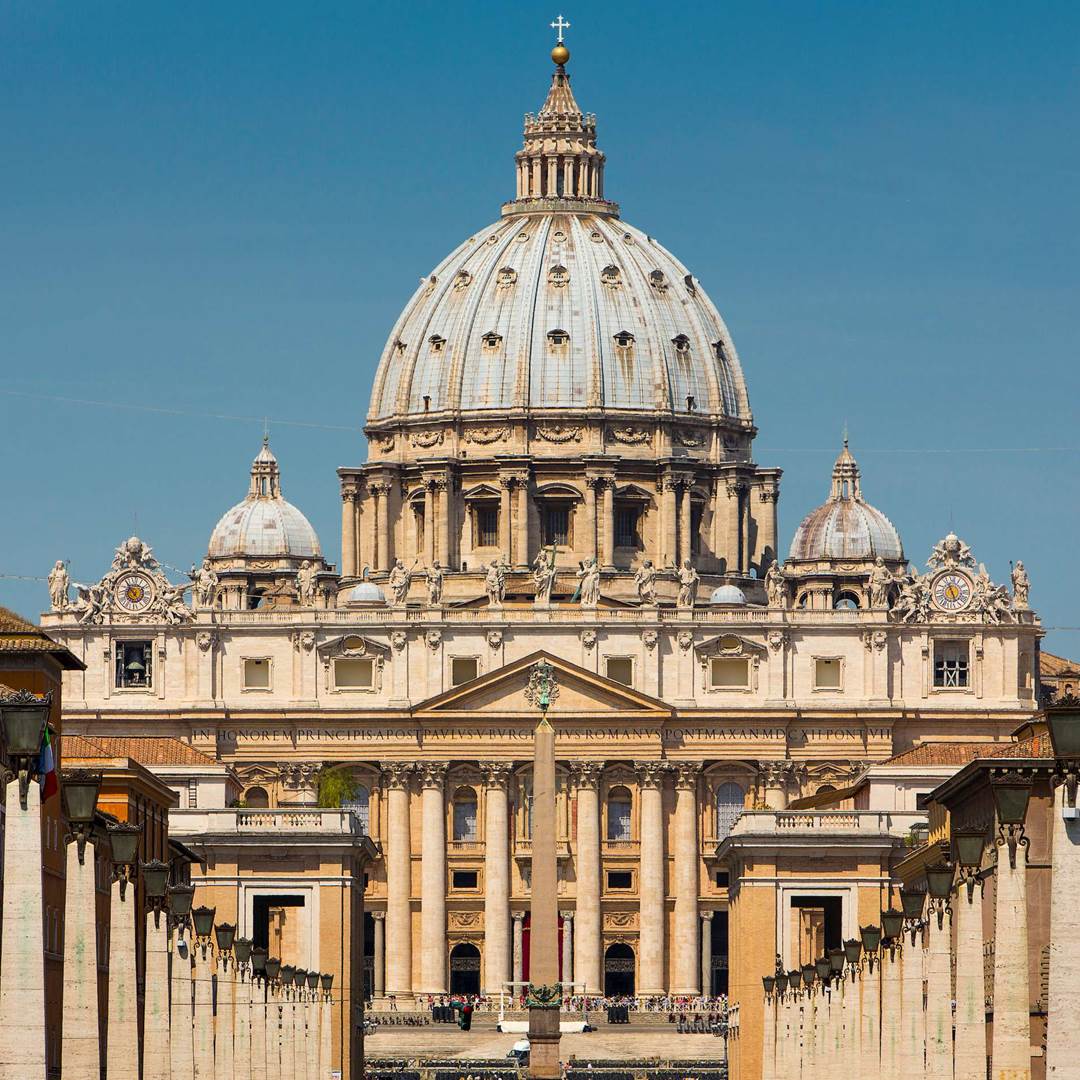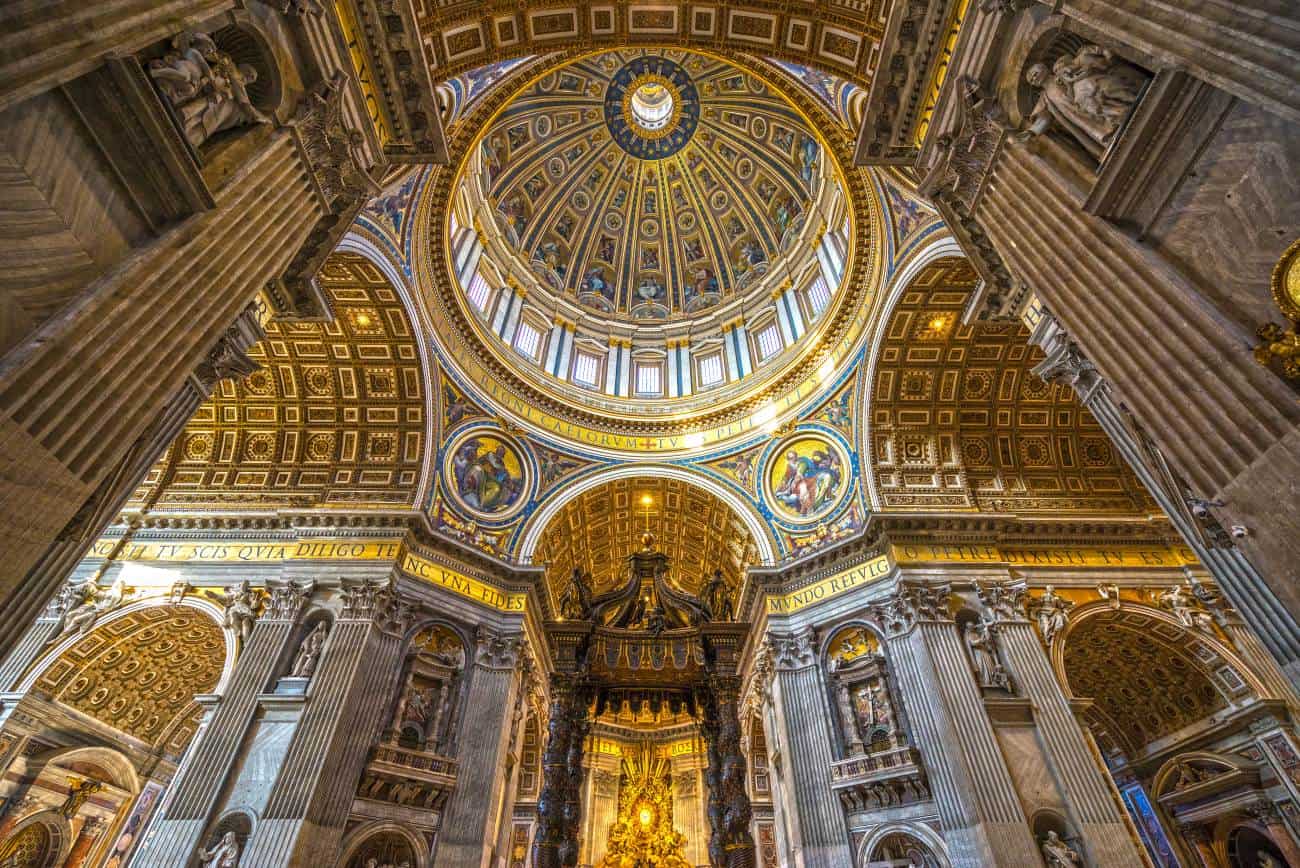St. Peter's Basilica: A Complete Guide to Rome's Architectural Masterpiece
Discover St. Peter's Basilica, a breathtaking symbol of the Catholic Church and the heart of Vatican City. It will delve into the basilica's rich history, explore its awe-inspiring interior, provide practical tips for planning your visit, and answer frequently asked questions to ensure an unforgettable experience.
St. Peter's Basilica: A Complete Guide to Rome's Architectural Masterpiece
St. Peter's Basilica, a breathtaking symbol of the Catholic Church and the heart of Vatican City, stands as a testament to centuries of art, faith, and architectural ingenuity. This comprehensive guide will delve into the basilica's rich history, explore its awe-inspiring interior, provide practical tips for planning your visit, and answer frequently asked questions to ensure an unforgettable experience.

A Journey Through History: From St. Peter to Michelangelo
The Tomb of St. Peter: The Foundation of Faith
The story begins long before the magnificent structure we see today. Legend holds that St. Peter, one of Jesus's original apostles and considered the first Pope, was crucified and buried on Vatican Hill around 64 AD. The first basilica, commissioned by Emperor Constantine in the 4th century, was built over what was believed to be St. Peter's tomb. This original basilica stood for over a thousand years.
Renaissance Rebirth: From Ruins to Grand Vision
By the 15th century, the Old St. Peter's Basilica was crumbling and in need of significant repair. Pope Nicholas V initiated plans for a new basilica in the mid-1400s, but it was Pope Julius II who truly set in motion the ambitious project that would shape the basilica we know today. He commissioned Donato Bramante in 1506 to design a new basilica on a grand scale.
A Succession of Architects: Raphael, Michelangelo, and Bernini
Bramante's original design, a Greek cross plan, was ambitious but complex. Upon his death, Raphael took over, modifying the plan to a Latin cross. After Raphael's death, Michelangelo, at the age of 72, stepped in and significantly redesigned the basilica, focusing on a more centralized plan. He is best known for designing the iconic dome, although he died before its completion. Later architects, including Giacomo della Porta and Domenico Fontana, completed the dome using Michelangelo's designs. Carlo Maderno extended the nave in the early 17th century, transforming the basilica back into a Latin cross plan. Finally, Gian Lorenzo Bernini made significant contributions in the 17th century, designing the magnificent bronze baldachin over the altar and the grand colonnade that embraces St. Peter's Square.

Exploring the Interior: Masterpieces of Art and Faith
Stepping inside St. Peter's Basilica is an overwhelming experience. The sheer scale of the interior, combined with the abundance of art and religious significance, creates an atmosphere of awe and reverence.
Michelangelo's Pietà: A Sculpture of Unparalleled Beauty
One of the most famous sculptures in the world, Michelangelo's Pietà, depicts the Virgin Mary cradling the body of Jesus after the crucifixion. Completed when Michelangelo was only in his late 20s, the sculpture is a masterpiece of Renaissance art, showcasing incredible detail, emotion, and technical skill.
The Baldachin: Bernini's Bronze Masterpiece
Located directly above the papal altar and St. Peter's tomb, Bernini's Baldachin is a towering bronze canopy supported by four twisted columns. The bronze was sourced, in part, from the Pantheon. This baroque masterpiece is a stunning example of artistic grandeur and serves as a focal point of the basilica's interior.
St. Peter's Statue: A Symbol of Papal Authority
Near the altar, you'll find a bronze statue of St. Peter, believed to date back to the 5th century. Centuries of pilgrims have touched and kissed the statue's foot, resulting in significant wear. The statue serves as a reminder of St. Peter's legacy and the authority of the Papacy.
Climbing the Dome: Breathtaking Views of Rome
One of the highlights of a visit to St. Peter's Basilica is climbing to the top of Michelangelo's dome. You can take an elevator part of the way or climb the entire distance by stairs. The climb offers spectacular views of the basilica's interior and, from the top, panoramic vistas of Rome. This climb while challenging, is a rewarding experience.
The Papal Altar and Confessio: Above St. Peter's Tomb
Directly beneath the Baldachin lies the Papal Altar, reserved for the Pope's use. Below the altar is the ""Confessio,"" a semi-circular area that leads to the tomb of St. Peter. The Confessio is adorned with numerous lamps, creating a solemn and reverent atmosphere.
Other Notable Artworks: Sculptures, Mosaics, and More
Aside from those discussed, inside St. Peter's Basilica, there are also other equally notable artworks, such as the Monument to Pope Alexander VII designed by Bernini, the Holy Door, a door only opened during a Jubilee year, as well as many mosaics and sculptures decorating every part of the basilica.

Planning Your Visit: Practical Tips and Information
Visiting St. Peter's Basilica requires some planning to ensure a smooth and enjoyable experience.
Opening Hours and Admission: When to Go
St. Peter's Basilica is generally open daily, but opening hours can vary depending on the season and special events. Admission is free, but there may be a charge for climbing the dome or visiting the Vatican Grottoes. It is advisable to check the Vatican's official website for the most up-to-date information.
Dress Code: Respecting the Sacred Space
As a sacred space, St. Peter's Basilica enforces a strict dress code. Visitors are expected to dress modestly, with shoulders and knees covered. Shorts, sleeveless shirts, and revealing clothing are not permitted. You may be denied entry if you do not adhere to the dress code.
Security Checks: What to Expect
Be prepared for security checks when entering St. Peter's Basilica. These checks can involve metal detectors and bag searches. It is advisable to avoid bringing large bags or prohibited items to expedite the entry process.
Best Time to Visit: Avoiding the Crowds
St. Peter's Basilica is a popular tourist attraction, and crowds can be significant, especially during peak season (summer) and on weekends. The best time to visit is generally early in the morning or late in the afternoon to avoid the largest crowds. Mid-week visits are also typically less crowded.
Tours and Guided Visits: Enhancing Your Experience
Consider taking a guided tour of St. Peter's Basilica to enhance your understanding of its art, history, and religious significance. Numerous tour operators offer various tours, ranging from general overviews to specialized tours focusing on specific aspects of the basilica. Booking in advance is recommended, especially during peak season.
Accessibility: Ensuring Access for All
St. Peter's Basilica is wheelchair accessible, with ramps and elevators available to assist visitors with mobility impairments. Wheelchairs are also available for rent.
Frequently Asked Questions About St. Peter's Basilica
How long should I spend at St. Peter's Basilica?
Allow at least 2-3 hours to explore the basilica, climb the dome (if desired), and visit the Vatican Grottoes. You could easily spend an entire day if you are particularly interested in art and history.
Can I take photos inside St. Peter's Basilica?
Yes, you can take photos inside St. Peter's Basilica. However, flash photography is not permitted.
Is St. Peter's Basilica wheelchair accessible?
Yes, St. Peter's Basilica is wheelchair accessible. There are ramps and elevators available throughout most areas, though some parts like the dome climb are not accessible by wheelchair. Free wheelchair loans are available at the entrance.
Do I need to book tickets in advance?
While entry to St. Peter's Basilica is free, you may want to book guided tours or dome climb tickets in advance to avoid long queues. This is especially recommended during peak tourist season.
Can I attend Mass at St. Peter's Basilica?
Yes, Mass is celebrated multiple times daily at St. Peter's Basilica. Visitors can attend Mass, but photography and tourist activities are not permitted during services. Check the basilica's schedule for Mass times.
What's the best way to combine a visit with the Vatican Museums?
Many visitors combine their visit to St. Peter's Basilica with the Vatican Museums. The most efficient route is to visit the Vatican Museums first (with advance tickets), then enter St. Peter's Basilica through the special passage from the Sistine Chapel, avoiding the main entrance queue.
Is the tomb of St. Peter visible to visitors?
While the actual tomb is not directly visible, visitors can see the area above it (the Papal Altar) and visit the Vatican Grottoes beneath the basilica where many popes are buried. Special tours of the necropolis must be booked well in advance through the Vatican's Excavations Office.
Conclusion: A Timeless Monument of Faith and Art
St. Peter's Basilica stands as more than just a church or tourist attraction – it represents the culmination of centuries of artistic achievement, religious devotion, and architectural innovation. Whether you're a pilgrim seeking spiritual connection, an art enthusiast studying masterpieces, or a curious traveler exploring Rome's wonders, the basilica offers an unforgettable experience that transcends time and culture.
Its massive dome still dominates Rome's skyline, just as it has for centuries, serving as both a beacon for the faithful and a testament to human creativity and determination. As you plan your visit to this extraordinary monument, remember that every corner holds a story, every artwork carries meaning, and every moment spent within its walls connects you to countless generations who have stood in awe before you.